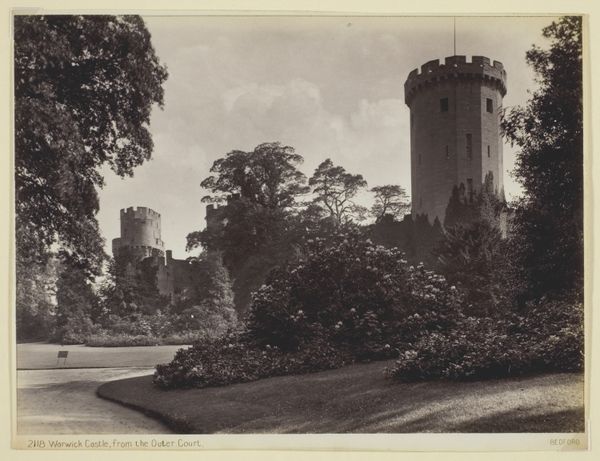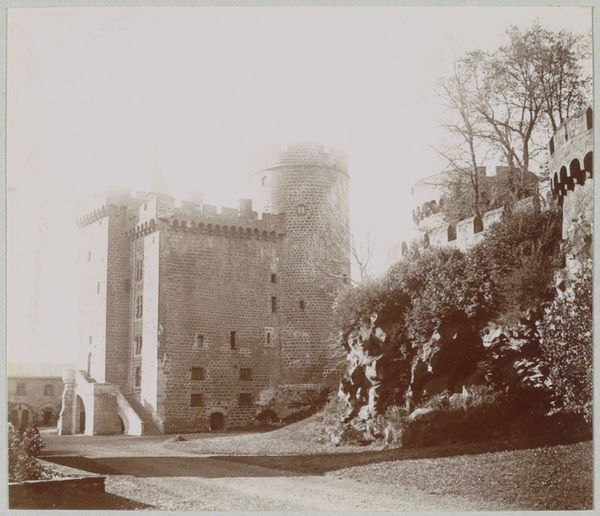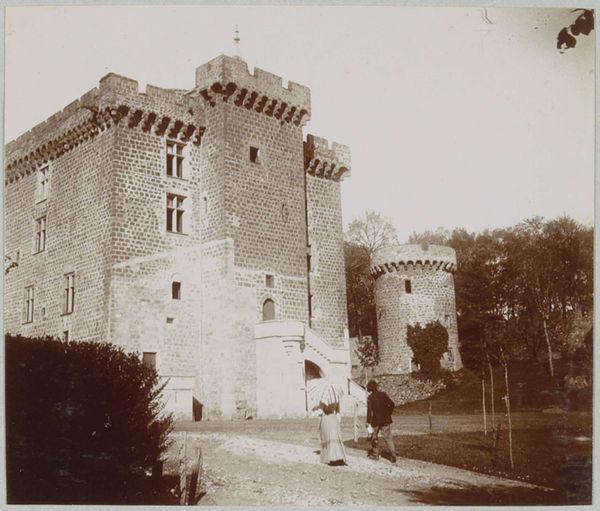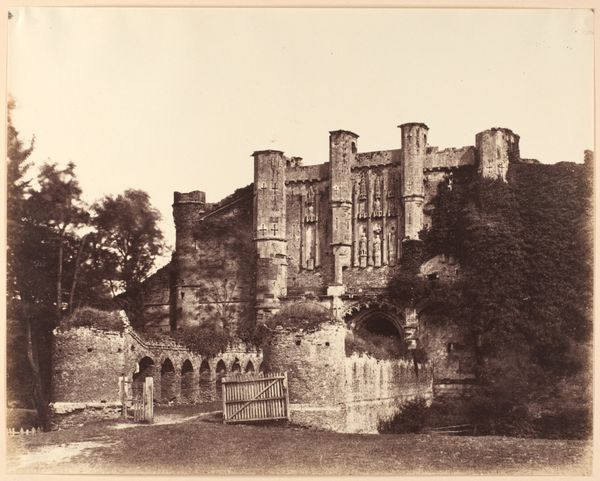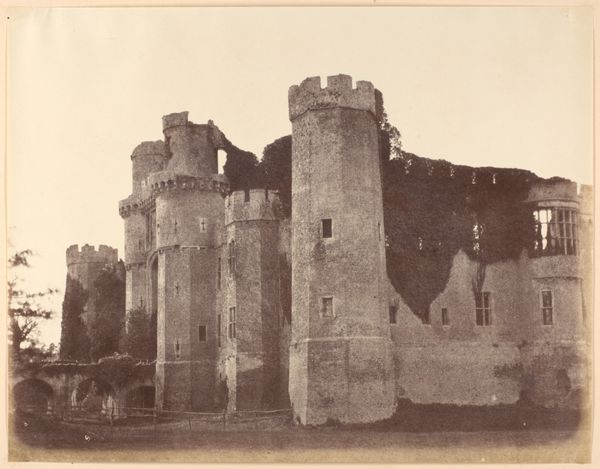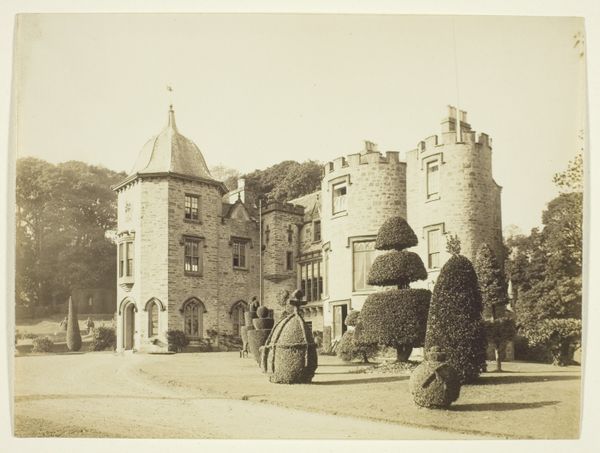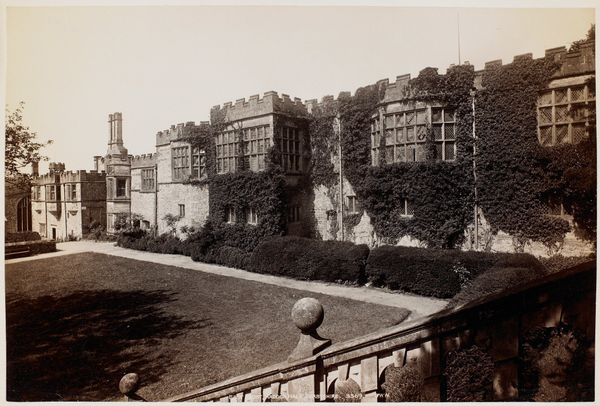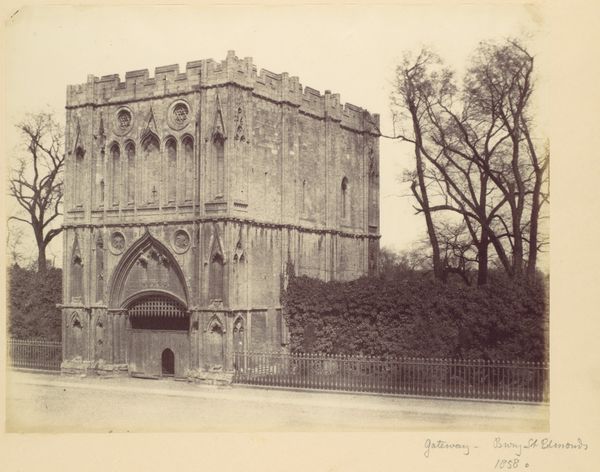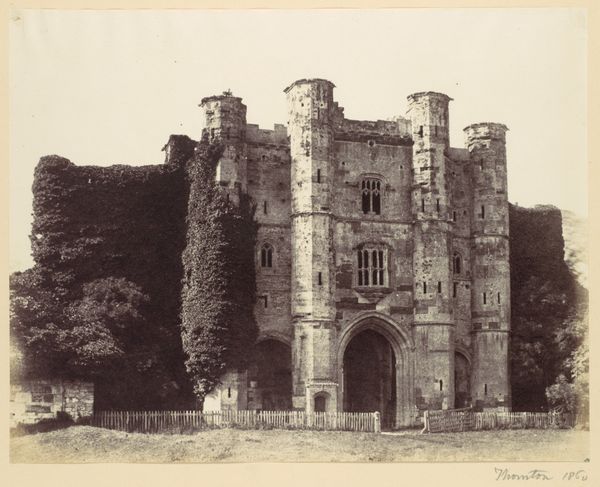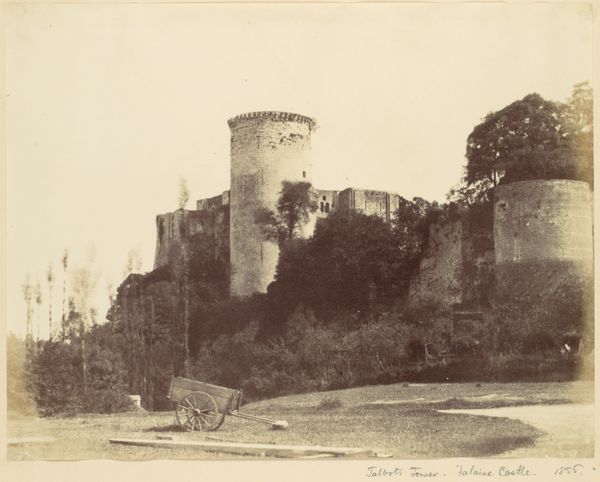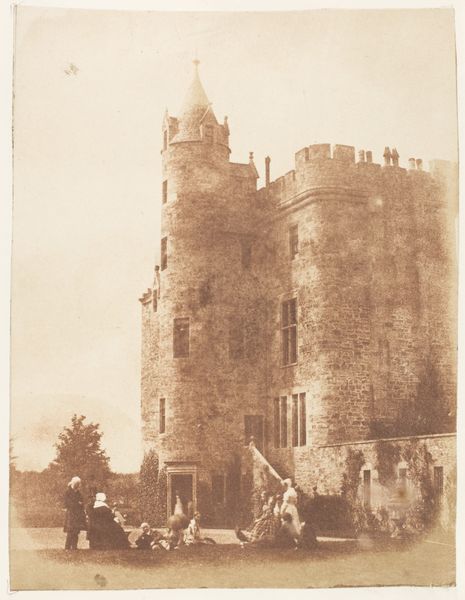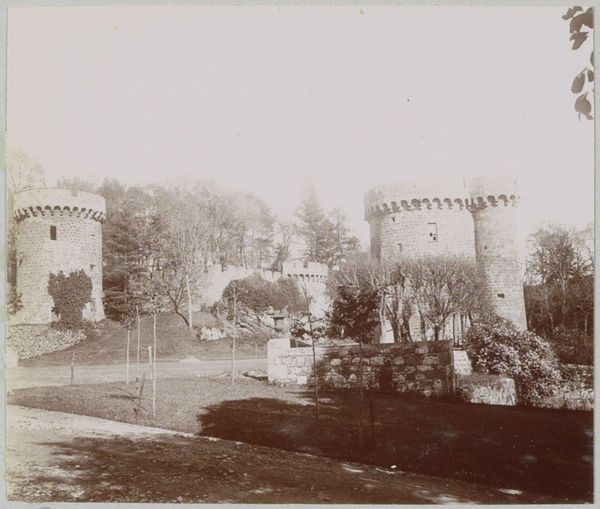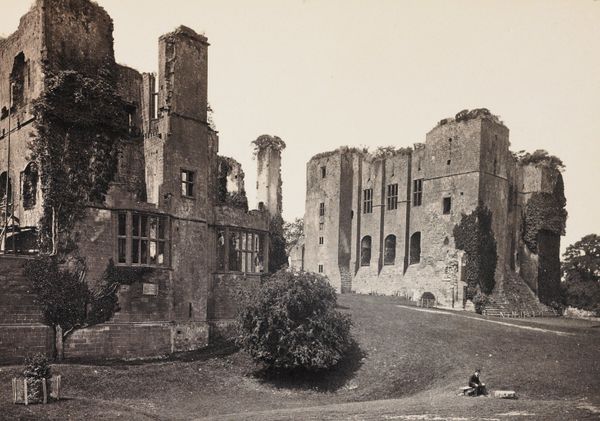
albumen-print, photography, albumen-print, architecture
#
albumen-print
#
medieval
#
landscape
#
historic architecture
#
photography
#
romanticism
#
history-painting
#
albumen-print
#
architecture
#
historical building
Dimensions: 4 x 5 15/16 in. (10.16 x 15.08 cm) (image)11 x 14 1/16 in. (27.94 x 35.72 cm) (mount)
Copyright: Public Domain
Curator: Let’s discuss this albumen print of Warwick Castle. The date of its creation is, unfortunately, unknown, but it offers a glimpse into the historical grandeur of this imposing structure. Editor: My initial response is awe at its scale. The geometric composition, the solid, repeating rectangles of stone and the almost perfect cylinders of the towers create this undeniably powerful image. Curator: Indeed, and Warwick Castle represents much more than impressive stonework. It signifies centuries of power struggles, shifting social hierarchies, and the complex relationship between the monarchy and the people. Note the labourers with the horse, captured here in relation to this powerful fortress. How does their presence shape your understanding of the image? Editor: I think their inclusion reinforces a sense of depth and, unexpectedly, introduces the possibility of intimate scale, which challenges the overwhelming feeling from viewing the entire façade of stone, creating a strong dichotomy. Curator: Exactly. These elements humanize the image and situate it within a specific social context. This tension—between power and servitude, monumentality and everyday life—reflects larger societal inequalities that have persisted throughout history. Warwick castle shifted from military fortress to country house, acting as witness to social hierarchies of medieval and subsequent times. Editor: I agree, and from a purely formalist approach, one can analyze how light and shadow interplay, dividing the castle's elements—vegetation versus stonework and depth, to further articulate a kind of story-telling in light. Note, for example, how ivy covers the castle like an organic skin. Curator: A perfect analogy! This dialogue between organic life and architectural dominance speaks volumes about humanity’s relationship with power, with history and the natural world. And it allows a potent interrogation of who is present, who is omitted, who held power, and at whose expense. Editor: So true. It has a kind of Romantic vision. From a semiotic point of view, each element evokes a sense of history but more so in how each stands alone with its own purpose, the ivy a strong counterpoint to cold, constructed space, stone, etc. Curator: I leave our listeners with these considerations and the hope that the image provokes curiosity and a critical evaluation of its broader cultural implications. Editor: For me, analyzing the artistic expression brings forward further appreciation for composition, for use of materiality and the emotional connection generated with the historic Warwick Castle through use of space and shadow.
Comments
No comments
Be the first to comment and join the conversation on the ultimate creative platform.
